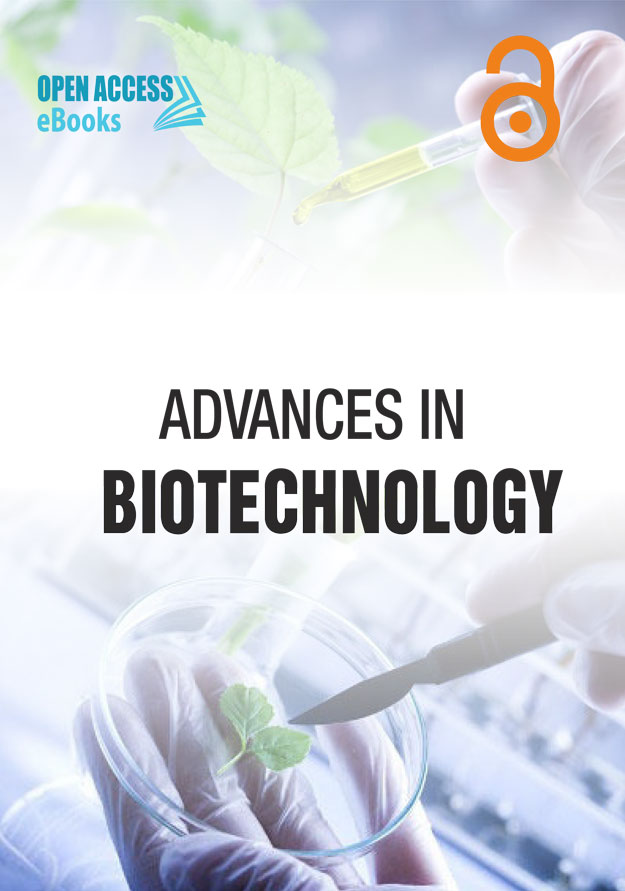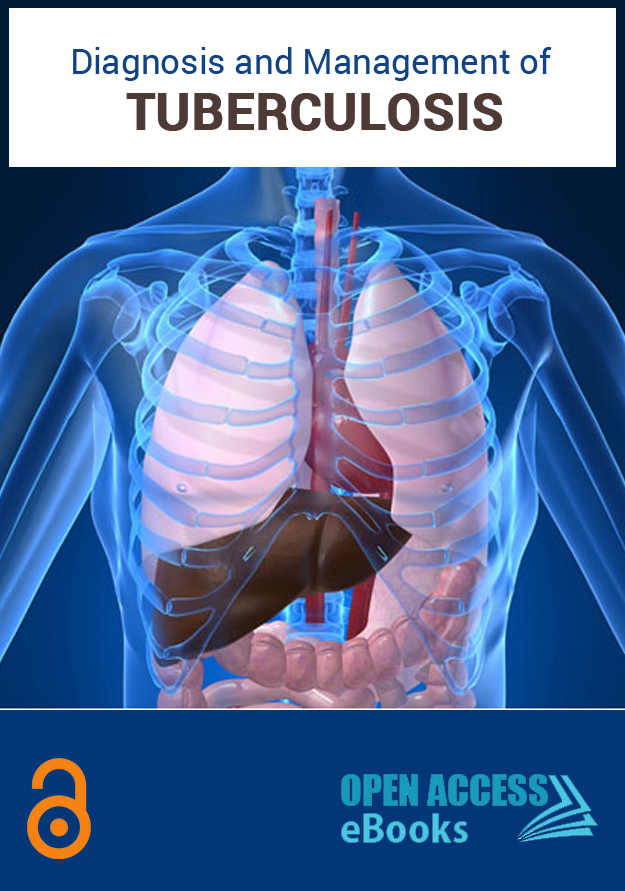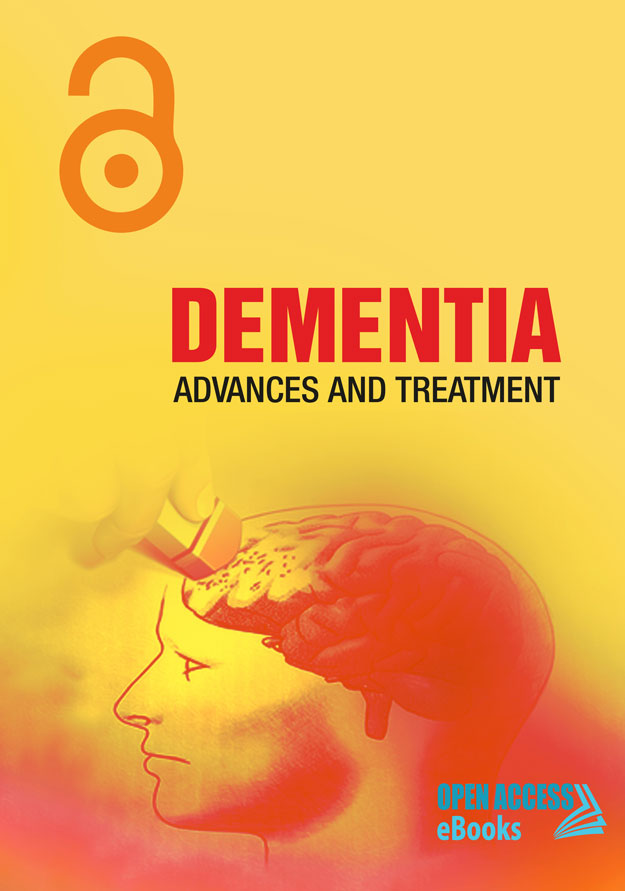Published Chapters:
Insights on the role of probiotic strains in the prevention of chronic diseases
eBook: Probiotics and Diet for Chronic Diseases Prevention
Probiotic as a term is a relatively new word meaning "for life" and it is currently used to describe a group of bacteria when administered in sufficient quantity, confer beneficial effects for human and animals [1]. With the growing interest of the self-care and integrative medicine coupled with our health - embracing baby bromes population recognition of the link between diet and health has never been stronger. The interest in probiotics and probiotic foods has grown enormously during the past several years across the world due to multiple health-promoting functional properties associated with probiotic cultures. Probiotic concept is now gaining momentum in India too with the entry of major global players in the probiotic production. With the growing awareness, health conscious Indian society is getting receptive to 'Probiotic Culture' and finds these products very attractive bioactive ingredients by serving as prophylactics or bio-therapeutics for promoting human health and well-being as well as management of specific diseases. However, still there is a long way to go before these probiotic foods change the Indian mindset and reach the common man to explore their full health benefits.
Celiac Disease - A Chronic Enteropathy, Its Management with an Emphasis on Probiotics
eBook: Probiotics and Diet for Chronic Diseases Prevention
Celiac Disease (CD) is a form of chronic enteropathy affecting the small intestine in genetically predisposed individuals expressing HLA DQ 2 and DQ 8 molecules. The disease is precipitated by the ingestion of gluten and related cereal proteins derived from barley and rye containing foods [1]. Often CD referred to gluten sensitive enteropathy, celiac sprue and non tropical sprue. This disease was first described in the 2nd century AD by Aretaeus Cappadocia who used the Greek term ‘koeliakos’ meaning ‘sufferings of the bowel’ [2]. Later in 1880, British physician Samuel Gee, clinically described CD “as a kind of chronic indigestion which has met with persons of all ages, yet it is especially apt to affect children between one and five years old, correctly surmised that errors in diet may perhaps be a cause, but could not pinpoint the true nature of the disease” [3].
Microbial diversity and syntrophic acetate degradation to methane in a high-temperature petroleum reservoir
eBook: Advances in Biotechnology
The results of our investigation on the microbial community of the high-temperature Dagang oilfield (P.R. China) are summarized. Detailed experimental data are provided on syntrophic acetate degradation by thermophilic associations, on the isolation of pure cultures from these associations, their physiological
characteristics, and reconstruction of microbial interactions during acetate degradation to methane. The microbial community of the high-temperature Dagang oilfield was investigated
by culture-based, radioisotope, and 16S rRNA gene techniques. Cultivable microorganisms (aerobic oil-oxidizing, anaerobic fermentative, sulfate-reducing, and methanogenic) were found
in formation water. Methanogenic enrichments were obtained in media both with Н2+CO2 and acetate. The process of methane production in formation waters was also registered by
radioisotope methods with Na214CO3 and 14CH3COONa. However, pure cultures of thermophilic aceticlastic methanogens were not obtained. The 16S rRNA gene analysis of the formation water and methanogenic enrichments revealed that H2-utilizing methanogens of the genus Methanothermobacter were predominant in the archaeal libraries (97% of archaeal clones). Phylotypes of acetate-utilizing methanogens were detected in the libraries only after the acetate content in formation water was increased. Bacterial phylotypes belonged to the known
fermentative (Thermoanaerobacter, Thermoterrabacterium, Thermovenabulum, Fervidobacterium, Thermotoga, Dictyoglomus, Pedobacter, and Dysgonomonas), sulfate-reducing
(Thermodesulfovibrio and Desulfotomaculum), and syntrophic (Thermacetogenium and Thermovirga) bacteria. Pure cultures of Methanothermobacter sp. and Thermoanaerobacter ethanolicus
were isolated from thermophilic methanogenic enrichments grown on acetate. The binary culture combining both strains carried out the reaction of syntrophic acetate degradation to
methane. The data obtained show that syntrophic associations may contribute significantly to methane production in high-temperature petroleum reservoirs. One of important ecological
function of fermentative bacteria of the Thermoanaerobacter–Caldanaerobacter group is their ability to carry out syntrophic acetate oxidation to Н2 and СО2, which is then reduced to
methane by hydrogenothrophic methanogens.
Limitations in the tissue culture of Indian sandalwood tree (Santalum album L.)
eBook: Advances in Biotechnology
The tissue culture of Indian sandalwood (Santalum album L.) has been extensively studied, mainly for its rapid propagation technology. Santalum album is believed to be the first the first woody species for which somatic embryogenesis was reported. Despite significant advances, there are still many problems blocking the two basal modes of regeneration, namely, shoot organogenesis and somatic embryogenesis, regardless of other modifications such as protoplast culture or genetic transformation. Without doubt, studies on shoot organogenesis or/and somatic embryogenesis from explants to induce adventitious shoots or somatic embryos of all stages will be continue to be published, but reliable and efficient solutions to the limitations of S. album tissue culture are needed. This review highlights these problems, and introduces some physiological and biochemical changes during shoot organogenesis and somatic embryogenesis. Finally, we discuss future research directions for the tissue culture of Indian sandalwood, aiming at a call for more studies that address these problems which hinder the full application of sandalwood tissue culture.
Microorganisms in environmental biotechnology application
eBook: Advances in Biotechnology
Microorganisms are essential to our very existence. They are ubiquitous, found in common environments such as soil, water, and air as well as exotic locales as diverse as deep sea hydrothermal vents and soda lime lakes. They are abundant in natural environments associated with wide range of activities like fuel and biomass production, mineral, nutrient recycling and energy recovery etc. Concerns of microbial studies have been identified as important area where background information is essential for recovery of natural component for our use. Useful applications of microbes, study of environment balance and their correlation are valuable for living organism. Microbes are used for environmental restoration and biomediation processes which are needed to lead more sustainable lifestyles and use of resources more justifiably. Microbes are everywhere in the biosphere, and their presence invariably affecting the environment. The effects of microorganisms on environment can be beneficial or harmful. Since a good part of this text concerns with a discussion of the beneficial activities of microorganisms as they relate to human welfare. Microorganisms are very diverse and their jobs are highly specific in the environment. Recognizing the numerous invaluable functions of microbes, this book chapter give the information about the environment and role of microbes in various applications like biomass degradation, fuel production, mineral recovery and nutrient recycling.
RNAi based strategies for enhancing plant resistance to virus infection
eBook: Advances in Biotechnology
Viruses are the most potent parasitic entities that are detrimental to all animal and plant groups with no exceptions known so far. The viral genome though small is sufficient for sustaining the infection and its propagation inside the host organism. The sessile inhabitants of the plant kingdom have developed their strategies to counter this threat too with variable degree of success. The most important and significant of these strategies involves the RNA silencing mechanism. The viruses have evolved successfully in parasitizing and evading this plant defense strategy, by their ability to encode various "suppressor" molecules, which are able to target different components of the silencing pathway in plants. Besides suppression activity, these proteins also perform functions essential for virus multiplication and pathogenicity. In this chapter we briefly discuss about the plant defense strategies with the help of RNAi mediated processes with special focus on Virus Induced Gene Silencing (VIGS) and the viral suppressors as countermeasures to combat this strategy, while describing the probable mechanisms of suppressor action and the variations that exist in their mode of action. We have also tried to elucidate certain assays that are commonly used to detect and quantify the activity and strength of these suppressor proteins. Then, we describe the specific applications of the RNAi based strategies used to counter virus attack.
A comparative in-vitro cytotoxicity study of biogenic and chemically synthesized metal (Ag and Au) nanoparticles
eBook: Advances in Biotechnology
In the current scenario, the most frequently asked query regarding the metal nanoparticles is related to its toxic effects despite of their vast potential application in the field of health, pharmaceutical and medicine. Even though there are lots of studies carried out focusing on the toxicity of metal nanoparticles, a proper comparative study of biologically and chemically synthesized metal nanoparticles is lacking. The main aim of the study is a comparative morphological, biological and genotoxic studies of biogenic as well as chemically synthesized silver and gold nanoparticles on the cell line- African monkey kidney cells (Vero) and human spermatozoa. Chemically synthesized nanoparticles had significant cytotoxic activity leading to the cell death and the comet assay in the spermatozoa make us clear that it creates significant DNA damage too. The release of lactate dehydrogenase, nitric oxide and reactive oxygen species (ROS) after its exposure to the metal nanoparticles finally resulting damage to most biomolecules, including DNA and protein points to the effect of biogenic and chemically synthesized nanoparticles on different biological system.
Bioprospecting of actinomycetes: Computational drug discovery approach
eBook: Advances in Biotechnology
There is an urgent need for new drugs with increasing threat posed by multidrug resistant bacteria. Among the various sources of natural products actinomycetes hold prominent position due to their diversity and proven ability to produce carried out focusing on the toxicity of metal nanoparticles, a proper comparative study of biologically and chemically synthesized metal nanoparticles is lacking. The main aim of the study is a comparative morphological, biological and genotoxic studies of biogenic as well as chemically synthesized silver and gold nanoparticles on the cell line- African monkey kidney cells (Vero) and human spermatozoa. Chemically synthesized nanoparticles had significant cytotoxic activity leading to the cell death and the comet assay in the spermatozoa make us clear that it creates significant DNA damage too. The release of lactate dehydrogenase, nitric oxide and reactive oxygen species (ROS) after its exposure to the metal nanoparticles finally resulting damage to most biomolecules, including DNA and protein points to the effect of biogenic and chemically synthesized nanoparticles on different biological system.
Adverse Effects of Amphetamines on Cardiovascular System: Review and Analyses of Trends
eBook: Advances in Biotechnology
Background: Amphetamine and amphetamine-type stimulants are powerful physical and psychostimulants; they are Phenethylamine derivatives. The use of amphetamines can be either medicinal or illicit. Several amphetamines have been redesigned into illegal drugs of potent properties. Hence, they are named as designer drugs or novel (new) psychoactive substances. Materials & Methods: This manuscript is a hybrid study of; data crunching and retrospective analysis of a trends database (1), and a systematic review of literature in relation to the amphetamines-induced adverse effects on the cardiovascular system (2). Google Trends database has been analysed in retrospect (2012-2017) to evaluate the attentiveness of surface web users towards amphetamine and a potent renowned amphetamine derivative known as captagon (fenethylline).
Cancer Epigenetics: Role of Epigenetic Events in the Onset and Progression of Cancer
eBook: Advances in Biotechnology
The word “Epigenetics” describes inheritable changes in gene expression that are independent of alterations in DNA sequences. Epigenetics is one of the most rapidly expanding fields in biology and over the past 16 years, the epigenetic regulation of DNA-based processes has been intensely studied. Epigenome is essential for the regulation and in unraveling the stages of normal and abnormal cellular development, including the phases of growth, differentiation, senescence, aging and immortalization during carcinogenesis. The recent characterization of DNA methylome at single nucleotide resolution has allowed the mapping of epigenetic machinery: DNA methylation, post-translational histone and other protein modifications, nucleosome positioning and noncoding RNAs (specifically microRNA [miR] expression) which act in concert to exert their cellular effects. Recent advancements in cancer epigenetics has highlighted the extensive reprogramming of every component of the epigenetic machinery in cancer. Disruption of the epigenome can contribute to cancer via altered gene function and malignant cellular transformation. The reversible nature of gene silencing by epigenetic modifications has facilitated the emergence of the promising field of epigenetic therapy. In contrast to conventional chemotherapy; several epigenetic drugs have been proven to prolong survival and to be less toxic. DNA methylation and histone modifications may serve as a potential targets for the development and implementation of new therapeutic approaches in the clinical settings. Many clinical trials are ongoing with novel classes of agents that target various components of the epigenetic machinery and have already made progress with the recent FDA approval of three epigenetic drugs for cancer treatment.
Magnesium as a Novel Regulator of Human Health and Diseases
eBook: Advances in Biotechnology
Magnesium (Mg) plays an important role in various cellular processes such as DNA repair and replication, transporting potassium and calcium ions and signaling transduction. Dietary source which are rich in Mg includes seeds, cocoa, nuts, green leafs and almonds. The daily dietary intake of Mg is frequently found to be below than the recommended in western country. Certainly it is recognized that Mg deficiency may lead to many disorders of the human being for example diabetes, cardiovascular disease and TB. Moreover, Mg deficit also leds to inflammation and amplifies the level of free radicals where it causes oxidative DNA damage and tumor formation. The presented book chapter provides a summary of low Mg impact on human health and development of various diseases.


